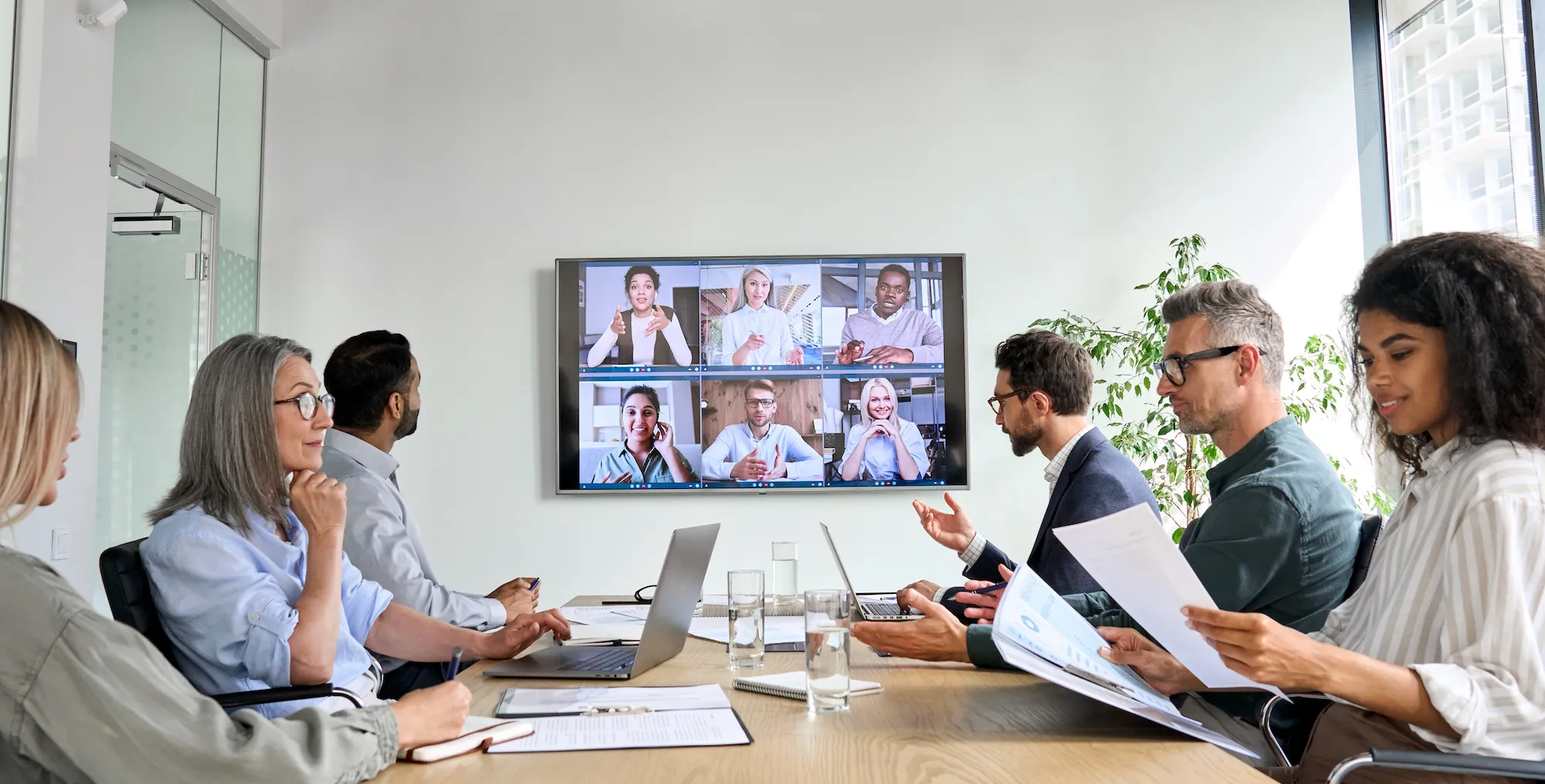Our Hybrid Future: Strategies to Enhance Performance
Remote Work
October 23, 2024
Tom Short
X min
Remote Work
October 23, 2024
Tom Short
X min

In our recent webinar, Reading the (Virtual) Room: Strategies to enhance digital communication, we explored how our world has forever changed since March 2020 with the arrival of the COVID-19 pandemic. Overnight, there was a massive global shift in where and how we work, communicate, connect, and collaborate. Now that we are entering the third year and the endemic stage, we’ll start to see a massive shift to a hybrid work future.
In the hybrid future, some will work at HQs, offices, or busy facilities, some gather at smaller offices or co-working facilities, and many will remain fully remote. Even the staff with access to offices and facilities will be working remotely several days a week, and most will be working with flexible hours. The future is going to be messy.
There have been many challenges and benefits from the forced global experiment. One thing for certain — there is no going back to the way things were.
While flexible, remote, and hybrid work was once seen as a privilege, it is now seen as a right. Organizations that embrace our hybrid future will be the future winners.
Success will come down to mastering organizational culture, workplace experience, and effective communication. Those who get it wrong will see it reflected in their performance and profits.
Even now, we see the adverse effects of the pendulum swinging too far to all remote all the time: burnout, low engagement, and a massive wave of resignations. We need to embrace the challenges ahead to reframe the great resignation, to the great reset.
The benefits of working from home are many for society, business, and the individual.
Businesses benefit from operational cost savings, a wider talent pool, the ability to retain older and more experienced employees, more motivated employees, fewer sick days, and more productivity.
Employees benefit from more autonomy, flexibility, work-life balance, and healthier well-being.
Society benefits from a lower carbon footprint, higher labor force participation, and equity for individuals with disabilities.
There are also many disadvantages, from heavy investment in telecommuting technologies and IT security, to resistance from some workers to these technology changes. Not to mention, technological and interpersonal communications challenges, loss of human and organizational connection, and coordination and collaboration difficulties.
Individuals see the extremes of all remote all the time manifesting as loneliness, stress, inability to unplug, and effects on training, coaching, and in-person collaboration — all negatively affect career advancement opportunities.
All things considered, the jury is in.
In a recent survey by both Gallup and McKinsey & Company, 52% of workers indicated they want a more flexible work environment going forward, with the ability to work 1 to 4 days in the office. As a result, 9 out of 10 businesses are saying they will adopt a hybrid workplace model in the future.
The office will evolve into collaboration centers with shared resources, communication hubs, and quiet areas to improve connections, enhance innovation, and drive collaboration and performance.
So how do we succeed in this hybrid future? Adaptability, fluid communication, and the ability to read the room will be key to connecting with remote and in-person team members, clients, and partners.
Our digital body language will be more important than ever to help us through this shift. Our digital body language is not just how we act or are perceived online in a video conference, but also in the way we use all digital communications; from chat tools (Teams, Slack), collaboration tools (Asana, Trello), specialty communication tools (Lattice, Kudos), to email, text, and even the phone. 55% of communication is visual, 38% is based on tone, and only 7% is what you hear.
In the book Digital Body Language, How to Build Trust and Connection No Matter the Distance, Erica Dhawan highlights several things you need to keep in mind when communicating:
Erica also recommends that you set explicit communication standards. What was once implicit in the office now needs to be explicit in a hybrid workplace, where many, if not all of your team members are online and using technology to communicate, coordinate, and collaborate.
Erica wraps up the essentials of communication in our brave new world as follows:
So how does this translate to being your best on a virtual call?
On the other hand, it’s important to observe what others’ body language is telling you. Mark Bowden and Joe Navarro, authors of “Truth and Lies, What People Are Really Thinking” and “What Every Body is Saying,” are two top experts on reading body language. Their insights can help you read the room, and avoid miscommunication.
Five simple signs that people are comfortable, absorbing, or agreeing with your message:
In contrast, here are a few body language signs of discomfort or disagreement you should be aware of:
Being aware of your own signals and observing others can help you avoid communication breakdowns. Preparing for meetings goes beyond setting the agenda, being on time, and having your notes ready; it also means applying the knowledge outlined above to get your point across and build strong relationships.
I would love to know your thoughts, observations, and results if you put some of these ideas into practice.
You can find me on LinkedIn @wtshort

A newsletter with the best resources for HR professionals.


Employee recognition differs by industry. Knowing how to use it strategically can have an undeniable impact on your business’ success.
Get Your Guide